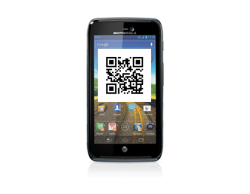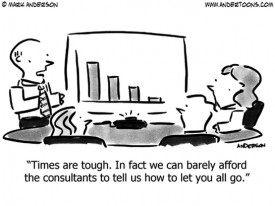 I’m prompted by reading a recent post on LinkedIn about what to do when clients ask you to do something wrong to offer some simple advice as to how to get that client to reach his or her own “Aha” moment and abandon their folly.
I’m prompted by reading a recent post on LinkedIn about what to do when clients ask you to do something wrong to offer some simple advice as to how to get that client to reach his or her own “Aha” moment and abandon their folly.
Simply ask “Why?” And continue to ask “Why?” until you get the same answer a minimum of three times in a row. You may, at this point, be fairly confident that you’ve discovered the root cause of the clients’ need, want or desire. And the client may, by this time, achieved the desired state of realization.
If you are a parent you know just how aggravating the constant “Why?” question from your young children can be. “Why is the sky blue?,” when asked by a 5-year-old, can’t reasonably be answered with an explanation of the layers of the atmosphere and the behavior of light in that atmosphere. Because the child won’t understand that answer and thus you will be faced with an innumerable and unending series of “why”s which will only beget another innumerable and unending series of additional “why” questions.
Far better to say something like “Because that’s the color Mother Nature wanted it to be.” If you get another “why” to this answer you’ll have to come up with some simple reason why Mother Nature would do such a thing, but you are not, in this case, constrained by reality or facts. You can use whatever it takes to end the questions, including distracting the child from that train of thought altogether. By asking, for example, “Why do you like brown (or pink or green or yellow) ice cream the best? Shall we go get some?”
When dealing in the real world of business with presumably educated and intelligent adults, however, the above example won’t work very well. You’ll want to have the client come up with real answers to your “why” questions so that you can eliminate the superficial or fallacious reasons that led to the request in the first place. You might ask “Why do you want to paint the delivery van chartreuse when the company logo colors are orange and brown?” If you get an answer like “Because my new girlfriend thinks it would be cute.” you can ask “And why do you think cute will be better than businesslike?” or something to that effect.
You can, and usually without upsetting the client too badly, get to a good solution using this powerful technique. Give it a try the next time you are faced with a demand that seems unreasonable. And please share with us the results. Why? Because I’ll bet they’ll be enlightening and humorous at the same time.
You can see some examples of wrongheadedness at 15 Question Silent Marketing Test, which also includes a video. Thanks for reading.








